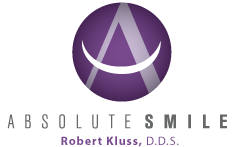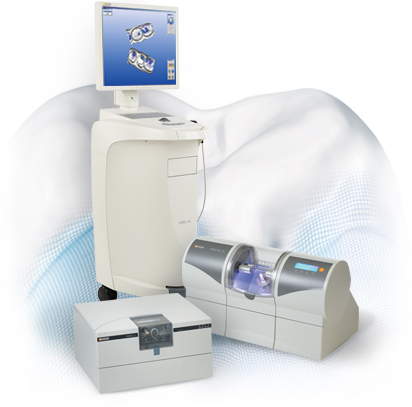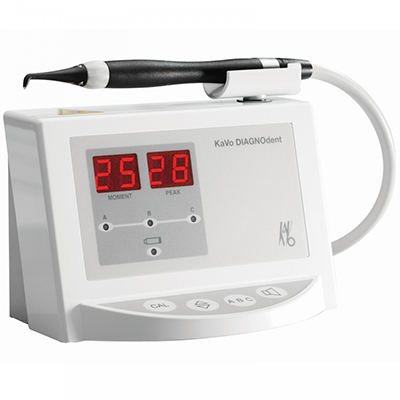The Technological Advantage
When you visit our office you’ll receive the finest dental care using the most advanced technology available in every procedure.
How new technologies help us care for your teeth better:
- Treatment with extreme precision
- Detect problems earlier
- Create custom restorations more quickly
Our advanced dental equipment includes:
- Single-Appointment Crowns
Single-Sitting Restorations with CEREC Omincam
Dr. Kluss uses CEREC Omnicam, the first full-color 3D intraoral camera, which enables us to create precision dental restorations for our patients in a single sitting.
CEREC stands for “Chairside Economical Restoration of Esthetic Ceramics,” or CEramic REConstruction.” This dental restoration tool allows us to produce ceramic dental restorations using a 3D photography and CAD/CAM computer software. [Coming Spring of 2013.]
CEREC Restoration Benefits:
- Teeth can be restored in a single sitting
- Crowns, veneers and inlays can be made using different types of ceramic
- No need for a temporary crown
- Laser Cavity Detection
Laser Cavity Detection
Early Cavity Detection with DIAGNOdent
Dr. Kluss uses DIAGNOdent laser detection during routine cleanings and check-ups for every patient to help detect cavities earlier. Laser detection removes the doubt from treatment decisions by allowing even very small lesions and incipient caries to be detected, for better protection and preservation of your teeth.
Laser Detection Benefits:
- Finds cavities at the earliest stages
- Permits use of minimally invasive treatments
- Proven to be 90% accurate. (Visual inspections: 57%; X-Rays: 67%)
- Detects early pathological changes that cannot be diagnosed by conventional methods like X-rays
- No scratching or probing. Simple, fast, painless
- No X-ray exposure
- X-Rays
About X-Rays
X-rays are a focused beam of x-ray particles passed through bone to produce an image on special film. This provides the familiar black and white images we use to diagnose problems and disease. Without an x-ray of the whole tooth and supporting bone and gum tissues, there’s no way to detect infection.
Digital X-Rays
We also use digital radiography, which emits 90% less radiation than conventional film x-rays. This lets us take an x-ray of your mouth with a small sensor that records the image of your teeth and sends it to a computer. This highly detailed image of your mouth can be enhanced to better diagnose dental concerns and determine the best treatment.- Digital Imaging Software
Digital Imaging Software
This allows us to take a digital picture of your teeth. The imaging system helps us predict how a particular treatment or cosmetic procedure would change the appearance of your teeth. This software benefits patients who may be considering cosmetic procedures, but are unsure if they’re ready for dramatic changes.
Digital imaging also allows us to accurately document your dental case and procedures. We take digital images of your face, teeth and smile to provide us with a permanent dental record and visual documentation of treatment.
- Intra-oral Imaging
Intra-oral Imaging
We use small cameras (about the size of a pen) called intraoral cameras to help us clearly see the condition of your teeth and gums.
This advanced technology lets us zoom in on small diseased areas, cracks, chips and worn metal fillings with extreme precision. Full-color images taken with the intraoral camera are sent to a computer screen so we can diagnose dental problems much earlier than traditional dental technology allows.
The images are displayed on screens, so you can see the areas that need work and get a better understanding of the procedure.
- Telescopic Loupes
Telescopic Loupes
Those funny-looking glasses the dentist wears during procedures are called surgical telescopes, or loupes.
These powerful magnifiers enable the dentist to see fine details that are invisible to the naked eye.
We also use new technologies for more efficient office administration:
- Paperless Charting
Paperless Charting
Our office is completely digital. We maintain your dental records electronically to reduce unnecessary paperwork. This means all x-rays and charting are made and recorded using a computer.
Traditional paper charting is difficult to keep standardized from doctor to hygienist to assistant. Even handwriting differences and coding make the charts look different.
The computer allows consistent charting methods that are accurate and precise. This makes it easy to read your dental chart and see up-to-date information.
Digital charting enables us to provide on the most accurate and precise care to our patients. It also allows us to quickly and securely share information with your other health care providers as needed.
- Automated Appt. Reminder
Automated Appointment Reminder
Our automated system will call your home two days before your appointment to remind you of your scheduled time. Please listen to the message and follow the prompts to confirm your appointment.
If you don’t respond to the message, our office staff will contact you to confirm your scheduled visit. If you’re not home, we’ll leave a message on your voicemail.
We require 24 hours notice for a cancellation. Failure to notify our office of a cancellation may result in a charge. See our missed appointment policy for more information.
- Electronic Claim Processing
Electronic Claim Processing
This means that rather than send your dental claim by mail, we send it to your insurance company electronically via computer. Filing your claim electronically is more efficiently and results in fewer errors. Consequently, your claim turnaround time is faster and less likely to be returned or denied.
We will be happy to submit dental claims to your insurance company for you.


